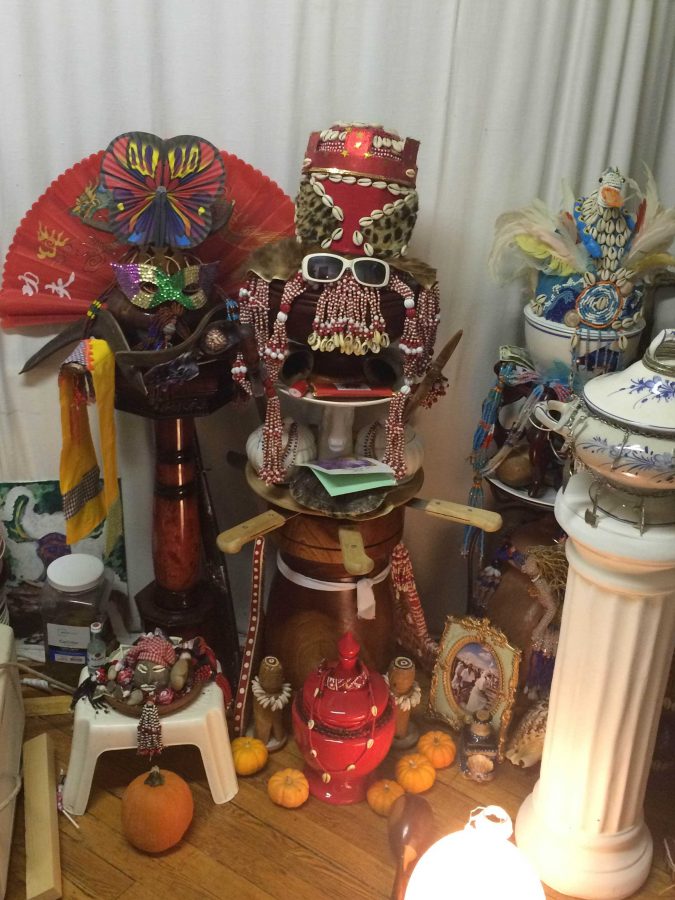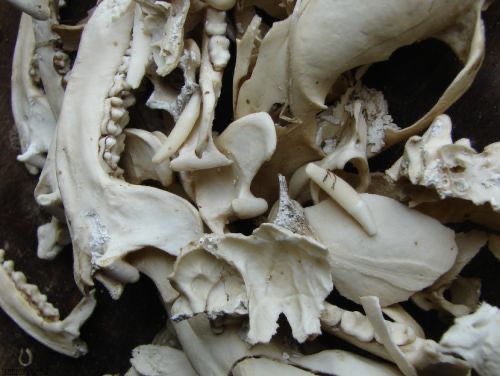By Mario Martinez —
 In almost any other part of America, if you see someone running outdoors, it is almost instinctual to wonder “What are they running from?”
In almost any other part of America, if you see someone running outdoors, it is almost instinctual to wonder “What are they running from?”
But in Hoboken, New Jersey, seeing someone endlessly gallop throughout its streets in full runner’s gear while exhausting their last every bit of breath is almost as common as seeing a taxi cab in a New York City.
In Hoboken, only one thing is more apparent than the marvelous view of the New York City skyline when viewing it from across the historic Hudson River. No, it’s not the murky algae-green water of the river, or the beautiful parks that streamline the shore, or the primeval palisades on which the buildings of Stevens Institute of Technology lie upon. What’s most apparent in this century and a half old square-mile city is the incessant marathon of joggers who have overrun its streets in recent years; regardless of rain, heat, or cold. Remarkably, somehow Hoboken has made it fashionable to do what millions of Americans dread to do: Jog.
At any time, you can spot a Hobokenite like Navish, a 31 year old looking to keep in shape by jogging regularly. Navish, like many other joggers, enjoys running outdoors rather than being indoors on a treadmill and says seeing so many other joggers and active people around has motivated him to keep fit.
Navish explained: “I see so many other ordinary people like me running outside and it motivates me to run faster or run longer. I feel different running on a treadmill. Even when I see people running on treadmill, they look sad. When I see people running outdoors, they generally look a lot more happy.”
Or maybe you’ll come across someone like Walter, an active 26 year old who drives from the nearby city of North Bergen to run sprints on the 12th street pier which faces directly at the Empire State Building.
Walter said: “I come here really because of the view of New York City. Plus, I feel it’s safe around here. I see a lot of people who work out here too and it’s motivating. Everybody is doing something. It’s comfortable. You see people always running or biking. Everybody is just working out.”
Walter is not the only person who feels uncomfortable exercising in North Bergen. Many others do too, like Mike, age 40, who chooses to jog and bike in Hoboken instead of North Bergen, explaining that he feels out-of-place running in his neighborhood.
“It feels a little a weird running by where I live.” said Mike “I live on a big hill and sometimes I’d run sprints up them and people would look at me strange like ‘What’s up with this crazy guy?’ ”
Year-round, joggers can be seen coursing through Hoboken, around its modern parks and up and down its many hills along the coast of the Hudson. On a sunny day, lines of joggers of all walks of life can be seen scaling the edge of the city, huffing and puffing in their gym-wear while running synonymously to the beat of their headphones. With the NYC skyline as their backdrop, countless joggers spurt along the designated jogging-lanes that are painted throughout the city’s streets and parks, in what seems like a never-ending race between Hobokenites.
Even on the coldest and most benumbing days of the year, some tough as nails runners can be still be spotted around town trotting in their cold-prevention gear, heaving carbon clouds from their nostrils with steam rising from their neck and scalp into the arctic-like air of east coast winters. With a myriad of more enjoyable things to do in the city such as bar-crawling its main-street, eating at any of its ethnic restaurants, or doing some boutique shopping, Hoboken continues to have a growing population of joggers who scamper the city and are a constant reminder that maybe you should put down that giant “Gotta-Have-It” size tub of ice cream you just bought at the ColdStone creamery.
Jogging clubs, such as the Hoboken Harriers (HOHA) and the Hoboken Elysianites, plan weekly group runs in the city, making the trend of jogging kitsch within the community. Being more of a social standard, Hobokenites have taken the cruel and laborious idea of jogging and have made into a custom that is as popular (maybe even more) than bar-hopping Washington Street. But why?
Robert Foster, director of the Hoboken Historical Museum, a non-profit group funded by the state of New Jersey, believes the phenomenon is a way that the transient commuters of Hoboken are able to meet other active and like-minded people.
Foster said, “The HOHA’s and Elysianettes, besides being jogging clubs, they’re also really social. Because Hoboken is a very transitory kind of community, with many people who put in their two to four years and many times move on, if you’ve just located here, it’s a great way to meet other people. People get tired of the bars, and generally they’re more health minded and so its a different way to not have run alone and meet other people. It’s like keeping up with the Joneses a little bit. Sometimes they’ll go out and have a few drinks after a run. They’re all good people. They do a lot charity stuff too.”
Living in Hoboken for over twenty years, I’ve witnessed the change in population that has come along with the city’s gentrification which began around the year 2000. Since then, several enormous condominium buildings have replaced many of the industrial factories that were left abandon by expired companies from the Industrial age. Decrepit docks were restructured, cobble-stone streets with unforgiving pot-holes were paved over and parks were revamped with state-of-the-art designs which made the city’s population grow nearly 31% since 2000, from 38,577 to 50,005 in 2013.
Foster says the city’s renovation has made it an attraction for joggers from all over the New York/New Jersey metropolitan area to come and be a part of the fitness craze.
“Hoboken’s waterfront is a really great place to jog now with the walkways. Years ago you couldn’t get access to the to river and there were a lot of potholes and it just was not jogger friendly. And plus, you have one of the best views in the world probably. I meet a lot of joggers who talk about how if they had a really stressful day, they can come home from the city and they can go for a run and they feel it relieves a lot of that stress.” said Foster
One of these kinds of joggers is Emeya, age 31, who works in NYC but lives in Hoboken. Emeya says he enjoys taking a break from the tense strain of working in city that never sleeps by jogging whenever it’s weather permitting.
Emeya said: “It’s because we live so close to the city and many of the people who work in the city live here so it’s one of the ways to get away from the city and relax. You can do whatever you want, running, play tennis, or any sport you want. It’s nice here, that’s why there are so many people out here. And you can do all kinds of things with your family.”
Many of the new inhabitants of Hoboken are like Emeya, who work in the madness of mid-town Manhattan, which is a 15 minute drive, bus ride, or a Path train turn-style twist away. But back when Hoboken was under-developed, seeing someone running out in the streets meant police sirens or someone even worse was hot on their tails. Now that the city has become renovated, it is has boomed with business, parking wars and these skittering energetic critters called joggers.
One of these skittering critters is Val, age 46, who jogs from the neighboring city Palisade Park, along the Hudson shoreline to Hoboken’s legendary Lackawanna Terminal station and then back (which I calculated is an insane 16 mile trail along mostly rocky terrain). She says the city’s revamped environment has made her extend her running route because it’s a pleasure to exercise there and be a part of its milieu.
“It’s a very young area, everyone is outside and everywhere you go outside there are parks and trails. You can stop and get water. You can stop and have ice cream. You can really do anything here. It’s very comparable to New York City so it makes it more pleasurable to be outside. But again, a few years ago, I would never come down here.”
The influx of these inexhaustible marathoners is an impetus of the city’s socioeconomic gentrification. Look up any list of “Best Cities to Jog,” and aside from rural places with pulchritudinous natural trails to run, each city named will be of the upper-echelon of the American cities such as San Francisco, Boston and New York. Many of these cities have embraced the jogging culture that its people have grown accustomed to and now have even built attractions (marathons, running trails, etc.) for them. This phenomenon is easier to comprehend when viewing it from the other side of the fence.
When is the last time you heard of the 5k race happening in Harlem? How about a marathon in Compton, California? Or how about a jogging committee in Camden, New Jersey?
In impoverished, under-developed and high crime rate areas, jogging outdoors is a bold activity. If you’ve ever been to any ghetto in America, you will notice that running is limited to children and adolescents who run at parks and/or athletic facilities. If you are caught jogging outdoors (especially at night) in some of these areas, you will quickly find out what your top-speed is once some shady miscreant hanging out on a street corner asks you beguilingly: “How much did those pretty sneakers cost?”
Aside from safety, lack of open spaces, parks and over population make cities like Newark (population: 277,540) less appealing for outdoorsy joggers like John, age 40, who says he enjoys running on grass and being out in the elements.
John said: “I’d be less inclined to run in Newark. I would imagine there would be more traffic and smog and having to run through streets and lights. If they had trails I’d run the trail, or maybe if they had grass.”
Phil, age 21, who moved to Hoboken four years ago from rural western New Jersey, said an environment like Newark would turn him off to the idea of outdoor running as well, which he says he does mostly for the spirit of the activity.
“I’d be less into it because, honestly, environment is conducive to running. I grew up in western Jersey. I ran all the time out there and there really wasn’t anybody else running. I love running, that’s the first reason I do it and then environment inspires me but I just don’t think the environment in a city like Newark would inspire me.” said Phil, who I spotted taking a breather from sprinting.
But all the women I surveyed (5 total) each revealed being at least a little concerned about running alone in a high-crime rate city like Newark or Camden. Even Navish, who jogs in Hoboken regularly, expressed that one of the reasons he runs in Hoboken is because he never feels threatened there.
Navish said “I would be pretty scared to run outside [in Newark]. It’s much safer here. It’s definitely one of the reasons why I run here. At times, I run during the evening or late at night because I know it’s safe. Otherwise I wouldn’t.”
Undoubtedly, feeling safe while jogging, along with the trails and backdrop of NYC has inspired the square-mile city with over 10 different types of gyms (which range from your typical sports club to cross-fit training facilities), to get out from their dungeons and out in the open. Nate, who has owned a sports apparel store in Hoboken for the past ten years has noticed the increased popularity of jogging in Hoboken and believes the trend will continue to grow.
“There’s definitely a lot of fit people that live around here, there’s no question about that. I think social media has something to do with it too. There’s like a race craze. We’ve noticed in the past few years, people have been doing extreme races, where they have to run obstacle courses and stuff like that. They’re called Tough Mudders. They’re so popular with people here, so we get a lot of people coming in to get stuff for training.”
Tough Mudders are 10-12 mile obstacle courses designed by British Special Forces, where some of the world’s most toughest SOB’s team-up to run through mud-tunnels, balance their way across planks over pools of water, rope-climb over 12 foot walls and are greeted at the finish line with smiling friends, a beer and a rockin’ live band. With over $5 million raised for the Wounded Warrior Project (which provides beneficial programs for wounded soldiers) and over 700,000 participants to date worldwide, Tough Mudders events are made to inspire, challenge and promote great memories and good times to those who truly love to run outdoors. Now spreading across 5 continents and hosting seasonal events for the Tri-State area in Englishtown, New Jersey, the Tough Mudders series is arguably the toughest and funnest adventure challenges in the world which continues to gain more popularity each year.
The jogging craze in Hoboken to some people may seem pretty nonsensical. They think, “Who really likes running so much that they would do it on their own time?” Well, to some other people, running outdoors is a way of life. Many of them played sports throughout their life (as shown through their faded hometown sports jerseys they wear while jogging) and choose to jog in order to keep in shape and to keep in touch with their youth. Like children of the sun, these people love the warmth of the outdoors, its fresh, cool air and its unpredictable breeze patterns. They enjoy the comfort in being at one with an active community. The smell of fresh cut grass reminds them of days when they played their favorite sport as a kid. Now they marvel at Manhattan which scintillates in the sunshine like an emerald city on the Atlantic. And just like the crazy SOB’s that have made the Tough Mudders series a worldwide phenomenon, the popularity of jogging in Hoboken will only continue to grow and grow.
See other stories by Mario Martinez “It’s a matter of personal preference: Indoor-running vs Jogging”











MSK • Jan 14, 2015 at 12:22 pm
Hi Mario! This is a comprehensive and nice article.
Hoboken seems to be a great place to jogging. I’ll join the run there one day.
Anyway, when I see the “The Endless Marathon” in the title, a question pops up. What are the side effects of jogging to much?